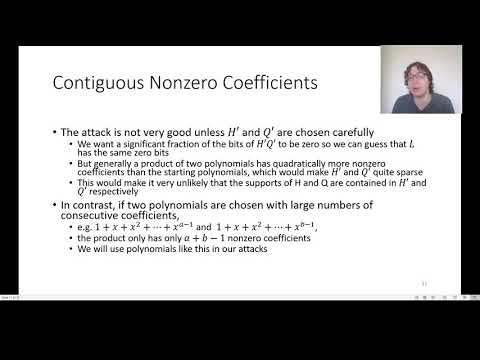CryptoDB
Cryptanalysis of LEDAcrypt
| Authors: |
|
|---|---|
| Download: |
|
| Presentation: | Slides |
| Conference: | CRYPTO 2020 |
| Abstract: | We report on the concrete cryptanalysis of LEDAcrypt, a 2nd Round candidate in NIST's Post-Quantum Cryptography standardization process and one of 17 encryption schemes that remain as candidates for near-term standardization. LEDAcrypt consists of a public-key encryption scheme built from the McEliece paradigm and a key-encapsulation mechanism (KEM) built from the Niederreiter paradigm, both using a quasi-cyclic low-density parity-check (QC-LDPC) code. In this work, we identify a large class of extremely weak keys and provide an algorithm to recover them. For example, we demonstrate how to recover $1$ in $2^{47.79}$ of LEDAcrypt's keys using only $2^{18.72}$ guesses at the 256-bit security level. This is a major, practical break of LEDAcrypt. Further, we demonstrate a continuum of progressively less weak keys (from extremely weak keys up to all keys) that can be recovered in substantially less work than previously known. This demonstrates that the imperfection of LEDAcrypt is fundamental to the system's design. |
Video from CRYPTO 2020
BibTeX
@inproceedings{crypto-2020-30535,
title={Cryptanalysis of LEDAcrypt},
publisher={Springer-Verlag},
doi={10.1007/978-3-030-56877-1_14},
author={Ray Perlner and Angela Robinson and Daniel Apon and Paolo Santini},
year=2020
}

